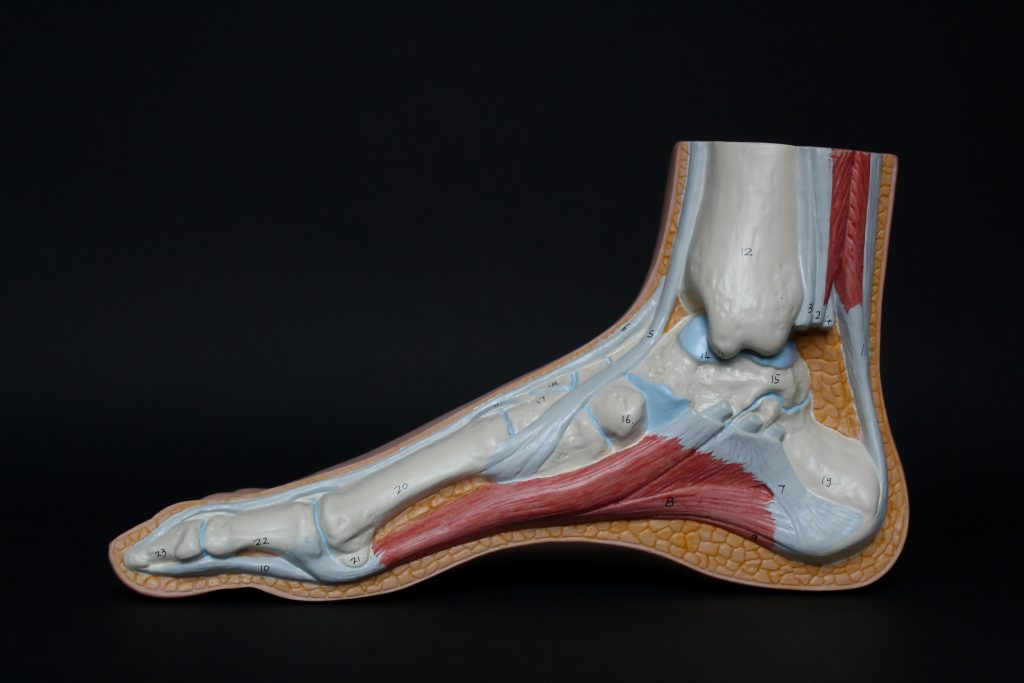Have you ever stepped out of bed and felt a sharp pain in your heel? You’re not alone—and there’s a good chance it could be plantar fasciitis.
So, what is plantar fasciitis? In simple terms, it’s a common foot condition that causes pain in the heel or arch of the foot. The good news is, it’s something we can treat—and the sooner you get on top of it, the better.
Let’s take a look at what plantar fasciitis actually is, what causes it, and how you can start feeling better.
First Things First: What Is Plantar Fasciitis?
Plantar fasciitis (pronounced PLAN-tar fash-ee-EYE-tis) happens when the plantar fascia—a thick band of tissue that runs along the bottom of your foot—becomes irritated or inflamed. This tissue connects your heel to your toes and plays a big role in supporting your foot’s arch.
When it gets overworked or strained, small tears can develop, which lead to inflammation and pain. You’ll usually feel it under your heel or along your arch—and it’s often worse when you first get up in the morning or after long periods of sitting.
What Causes It?
There’s no single cause, but a few common things can contribute to plantar fasciitis, including:
- Wearing unsupportive shoes, especially on hard surfaces
- Being on your feet all day, whether for work or exercise
- Flat feet or high arches, which can change how pressure is spread across your foot
- Tight calf muscles or limited ankle movement
- A sudden increase in activity, like picking up a new exercise routine or job that requires more standing or walking

What Does Plantar Fasciitis Feel Like?
Plantar fasciitis has some tell-tale signs. You might notice:
- A sharp, stabbing pain in your heel (especially first thing in the morning)
- Pain that gets better after you move around a bit, but comes back later
- Aches or tightness in the arch of your foot
- Discomfort after standing, walking, or being active for a while
It can range from mildly annoying to really painful—but either way, it’s something worth addressing.
What Can You Do About It?
The good news is, most people recover well with the right care. Here are some simple ways to manage plantar fasciitis:
Wear the Right Shoes
Supportive shoes with good arch support and cushioning are key. If you’re walking on hard floors a lot (hello, Aussie tiles!), this can make a big difference.
Stretch It Out
Gentle stretches for your calves and the bottom of your feet can help ease the tension on your plantar fascia. Rolling a tennis ball under your foot is a great place to start!
Rest and Ice
Give your feet a break and apply an ice pack to your heel to help reduce inflammation—especially after a long day on your feet.
Consider Orthotics
Custom or off-the-shelf orthotic inserts can provide extra support and take pressure off the sore area.
See a Professional
If the pain sticks around, it might be time to chat with a GP or physio. They can guide you through treatment options like physical therapy, exercises, or other supportive therapies.
How Brecken Health Bunbury Can Help
At Brecken Health Bunbury, we understand how frustrating foot pain can be—especially when it starts interfering with your daily life. Our friendly, local team can help you get the right diagnosis and work with you on a treatment plan that suits your lifestyle.
Whether it’s referrals to physio, advice on orthotics, or support with pain management, we’re here to help you get back on your feet—literally.
You don’t have to put up with sore heels. Book an appointment with Brecken Health Bunbury today and let’s get you moving comfortably again.
